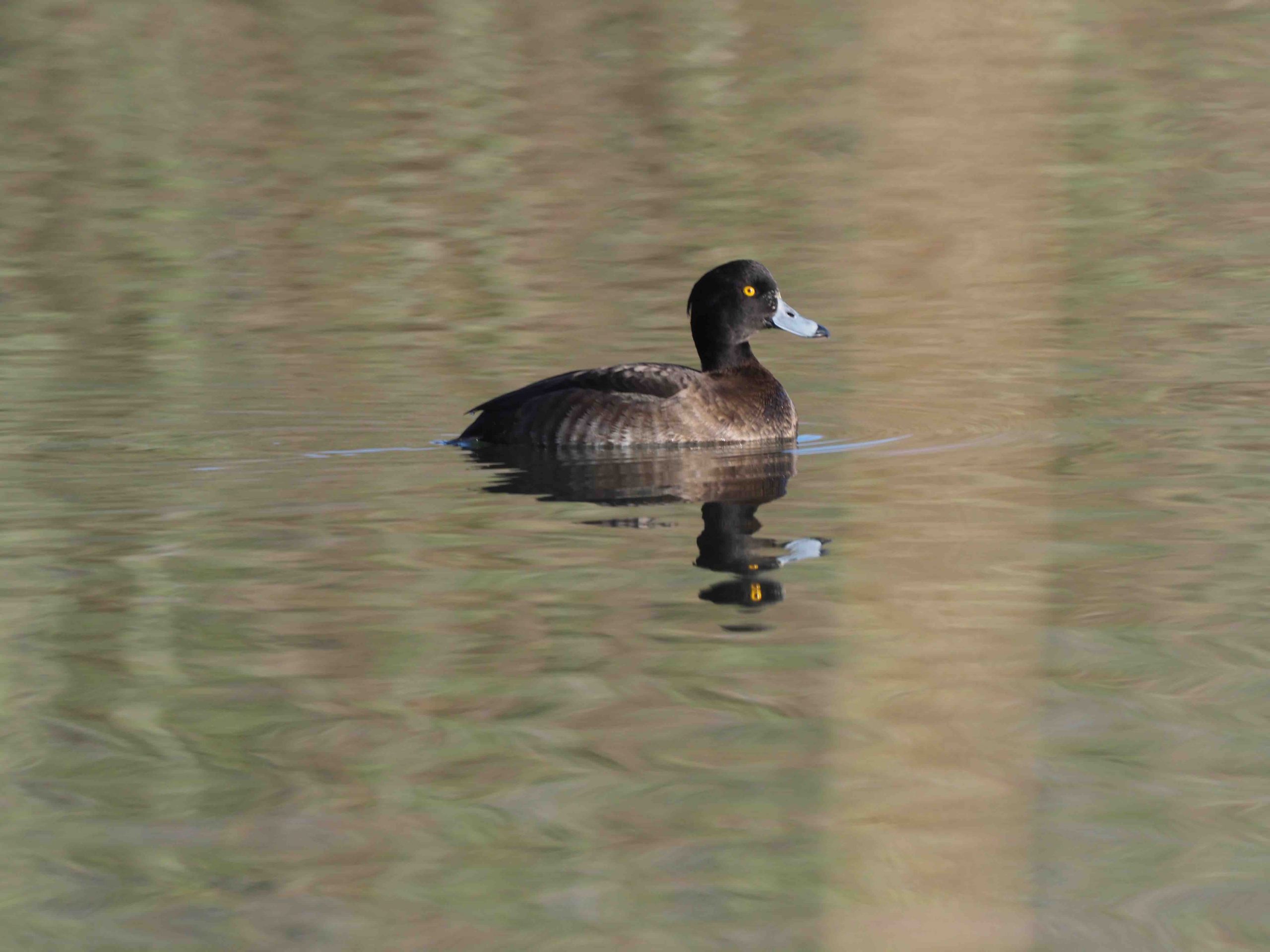
The Tufted Duck is our most widespread diving duck. It is smaller than a Mallard. The male is black with white sides and has a black drooping crest. The female is brown with pale brown sides. Both male and female have a light blue bill with a black tip, and yellow eyes. The female sometimes has white round the base of the bill which can make her look, confusingly, a bit like another duck called a Scaup. In flight there is an obvious white stripe that runs the length of the wing. During their moult, from June to October, they are flightless for 3-4 weeks and the male looks similar to the female. Male Tufted Ducks are generally silent while the female has a harsh rasping, "karr!" Another nagging lady duck.
The Tufted Duck dives with a distinctive jump. They feed on water plants, insects, shrimps, and fresh-water mussels (especially the zebra mussel) found at the bottom of lakes. They can dive to depths of 7m or more, which is some distance considering the size of the duck. Their feet are placed further back on their bodies, to help with swimming and diving, which makes walking on land difficult, so sensibly they don't.

The few noises a male Tufted Duck does make are bubbling giggles to attract a female in late winter or early spring. The pair then settle down to nesting in May at a suitable reservoir, lake, or gravel pit. They tend to avoid deep water unless it has shallow margins. The female builds a nest out of grasses lined with her down. Tufted Ducks will often nest in colonies so the ladies can have a good gas and bitch about their men as, like the Mallard, the male Tufted Duck leaves the area once child rearing starts and has little to do with it. The 8-11 eggs hatch after 25 days and the youngsters feed themselves on midge larvae. They can fly 45 days later. The female often leaves her young before then, so neither mum nor dad are the best of parents.
There are about 20,000 breeding pairs in Britain which swell to 120,000 in winter with ducks from Northern Europe, forming large flocks outside of the breeding season. Tufted Ducks are widespread in Britain though scarcer in Wales as, being diving ducks, they don't like welsh cakes or lava bread.
The Latin name is 'aythya fuligula' from the Greek 'aithuia' an unidentified seabird mentioned by Aristotle and the Latin 'fuligo' for 'soot' and 'gula' for 'throat'. So unidentified seabird with a sooty throat. We call them Tufties.